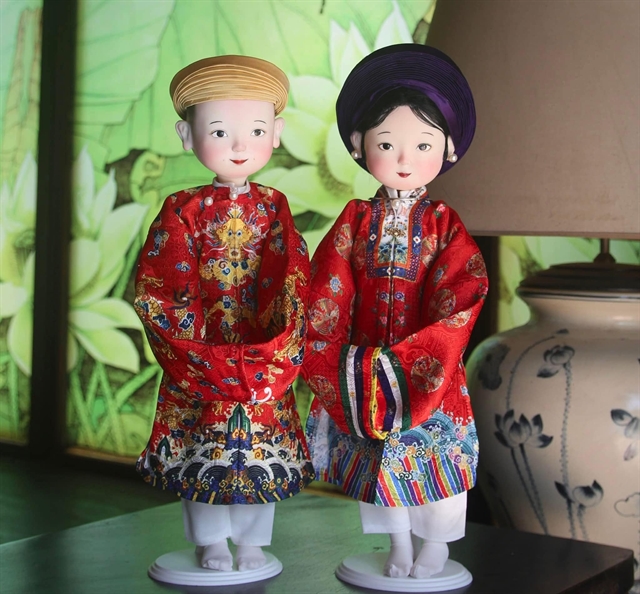 Features
Features

" />Huế is conducting repairs on a residency belonging to a former princess, using local government funds. The home is not listed alongside protected imperial buildings, but it stands for the outstanding garden houses that the city considers its architectural legacy.
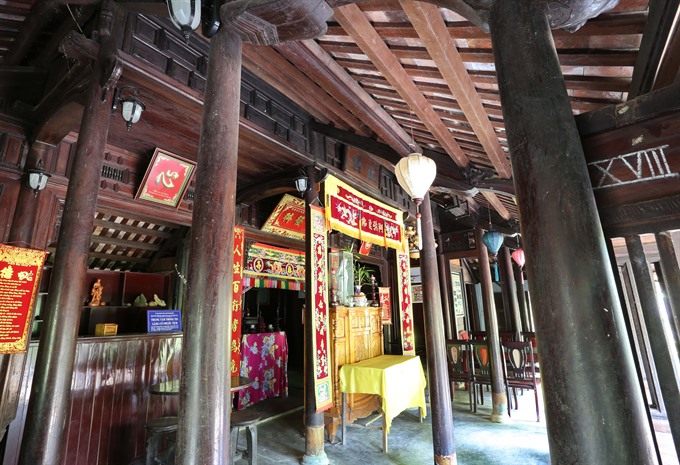 |
| Made of wood: Interior view of beams and pillars of a nhà rường. — VNS Photo Nguyễn Văn Sum |
Huế is conducting repairs on a residency belonging to a former princess, using local government funds. The home is not listed alongside protected imperial buildings, but it stands for the outstanding garden houses that the city considers its architectural legacy.
by Huê Phong
Authorities in the former imperial capital city of Huế has begun repairing a typical garden house in the city – Ngọc Sơn Princess Residency.
Decades ago, the city proposed that nhà vườn, or Huế style garden houses, should be preserved. The old structures, dotted around the city and also in suburban areas, are at risk of becoming deteriorated due to the ravages of time, as well as the rapid pace of urban development.
According to Phạm Thị Quỳnh Dao, deputy head of the city’s unit overseeing the management and protection of garden houses, the city has made a list of 25 typical buildings in urgent need of repair.
“We are making repairs on the houses, hoping to keep their authenticity both in scale and structure,” she said, adding that the work would be completed by 2020.
Dao said the city has a further 100 garden houses, and the unit would attempt to involve them in the maintenance proposal.
The Princess Residency is the third house to receive funds from the city budget for repairs on its wooden structure. The work attracted the most public interest thanks to the history and significance of the house in Huế culture.
 |
| Chill out: Relaxing ambiance in front of a garden house. — VNS Photo Trương Minh Hiếu |
Legacy
Princess Ngọc Sơn, daughter of Emperor Đồng Khánh (1885-1889), married military mandarin Nguyễn Hữu Tiễn, and the couple received a 2,400sq.m plot of land near the citadel to build their residency.
Unfortunately, the princess passed away soon after marriage. In 1921, her husband built the residency, naming it Ngọc Sơn Công Chúa Từ, which means " The House for worshipping Princess Ngọc Sơn".
Researcher Trần Đức Anh Sơn wrote that “its owner had made full use of the fengshui elements and his own finest aestheticism to create a perfect complex of architecture.”
Sơn described the structure as a complex in harmony with nature but stable enough to prevent bad fengshui intruders from entering, thanks to multiple fragrant plants and flowers in the garden and an ornamental mountain in the front yard.
Unlike residencies or houses of worship for other royal family members, this particular structure does not have a giant three-door gate. It has a simple gate with two short concrete poles connecting to two curved fences made out of the evergreen shrub Acalypha siamensis.
According to Sơn, the arrangement is designed to welcome guests to the house.
Tiễn reserved the main house for worshipping his first wife and other buildings for sheltering his next wife, who was also a princess, and their children. Thanks to the family tradition, the family’s third generation has preserved the residency as it is. Many other royal homes were divided into smaller plots to serve the needs of their descendants.
Granddaughter of mandarin Tiễn and her husband, well-known Huế researcher Phan Thuận An, helped remained the garden house unchanged for 96 years. The residency stands as part of Huế today thanks to the loyalty from Tiễn to the late princess and the loyalty of An to the legacy of her ancestors.
For years, An received visitors every day at the house and rewarded them with interesting stories about Huế until falling into ill health.
Actual work
According to Trần Song, head of the city’s garden house protection unit, after this repair project the Princess Residency would be listed among destinations by city authorities to attract visitors.
Huế authorities consider garden houses to be part of the city’s architectural legacy. A traditional garden house comprises two sections: the houses and the garden. The structure of buildings in garden houses must be nhà rường, meaning a wooden structure with many beams and pillars, and two earthen tile roofs meeting at the top.
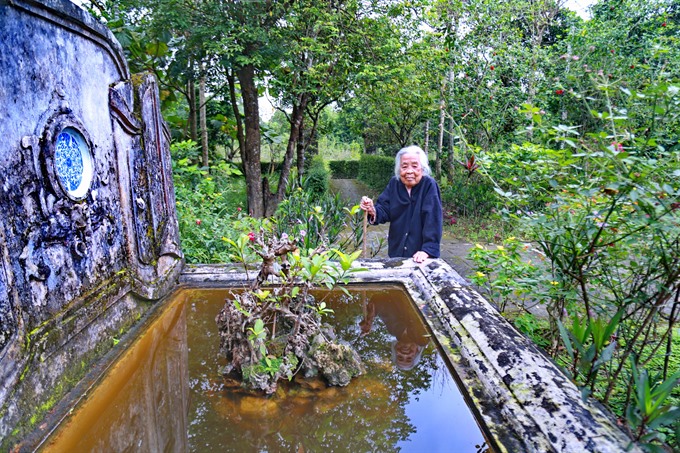 |
| Old structure: A fish pond and wall outside a garden house. — VNS Photo Nguyễn Văn Sum |
A nhà rường structure doesn’t use steel nails, and the whole edifice can stand on a flat surface without anchoring or concrete foundations.
The garden includes components of regular yards, an ornamental man-made mountain or a single rectangular wall built to shield the dwelling from the wind, a fish or lotus pond, maybe a man-made stream, areas for perennial trees and areas for flowering plants and bonsai. All elements must strictly adhere to the Oriental concept of fengshui.
Experts explained that people in the former royal capital city are known to be calm and deeply connected to nature. The structure of garden houses is therefore a reflection of their characters and also an ambiance in which they can maintain a certain peace of mind.
Huế authorities recognised these values and wanted to preserve the garden houses in the past, but for decades they had suspended the projects put forward by house owners, preventing them from repairing the houses despite assurances that the repairs would not affect the authenticity of the ancient structures.
Actual work began last year, when the city formed the garden house protection unit and got house owners involved in the proposals, with a fund of between VNĐ400 million and 700 million for renovation.
Additionally, city authorities have banned the construction of tall buildings in proximity to the garden houses. They also detailed regulations for rural development in the same areas. Homes built on such plots must be lower than 11 metres and have a maximum of two storeys.
Each home is allowed to occupy 20 per cent of the total 1,000sq.m plot, 25 per cent of a 2,000sq.m plot, or 30 per cent of a 3,000sq.m land plot.
No modern structures are allowed. Homes must be built with wooden frames and covered by two tile roofs meeting at single point. Dark, multi-coloured, glass or stone walls are also prohibited.
The maximum permitted height of fencing is 2.1m, and plant-based fencing is preferred.
Business establishments such as restaurants or souvenir stands must be lower than 7.5m and they must ensure they do not disrupt the fengshui of the garden houses.
The action has been met with applause by the public, thankful that the authorities are working to preserve the city’s cultural legacy. — VNS
 |
| Welcoming abode: Researcher An receives guests at the Ngọc Sơn Princess’ residency. — VNS Photo Nguyễn Văn Sum |
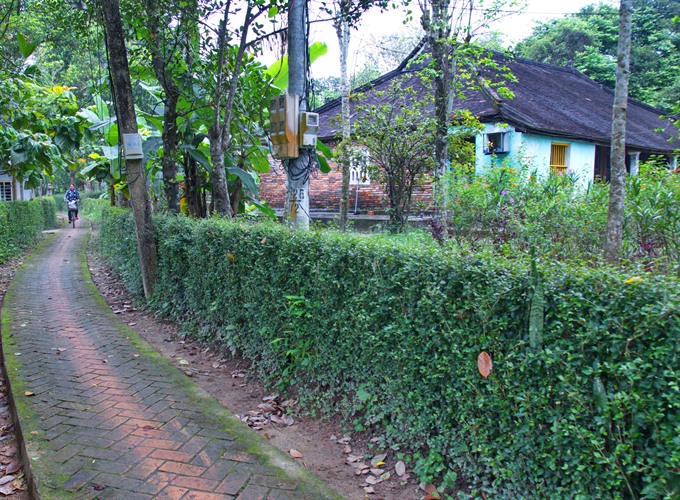 |
| In nature: Greenery around a garden house. — VNS Photo Nguyễn Văn Sum |
 |
| Royal home: A view of Ngọc Sơn Princess’ residency. — VNS Photo Nguyễn Văn Sum |
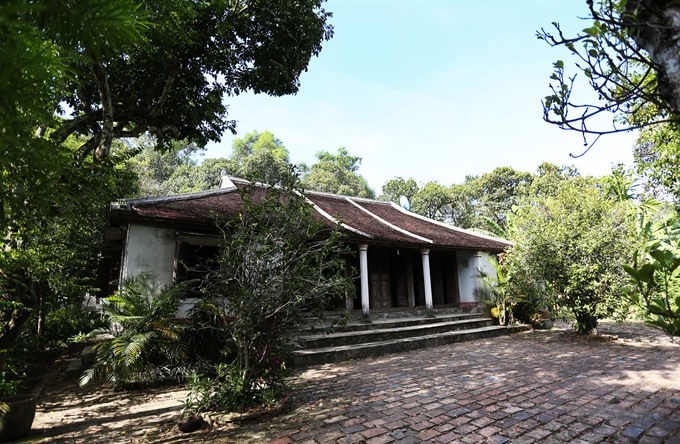 |
| Sloping roof: A key building of a garden house in old Phước Tích Village. — VNS Photo Nguyễn Văn Sum |